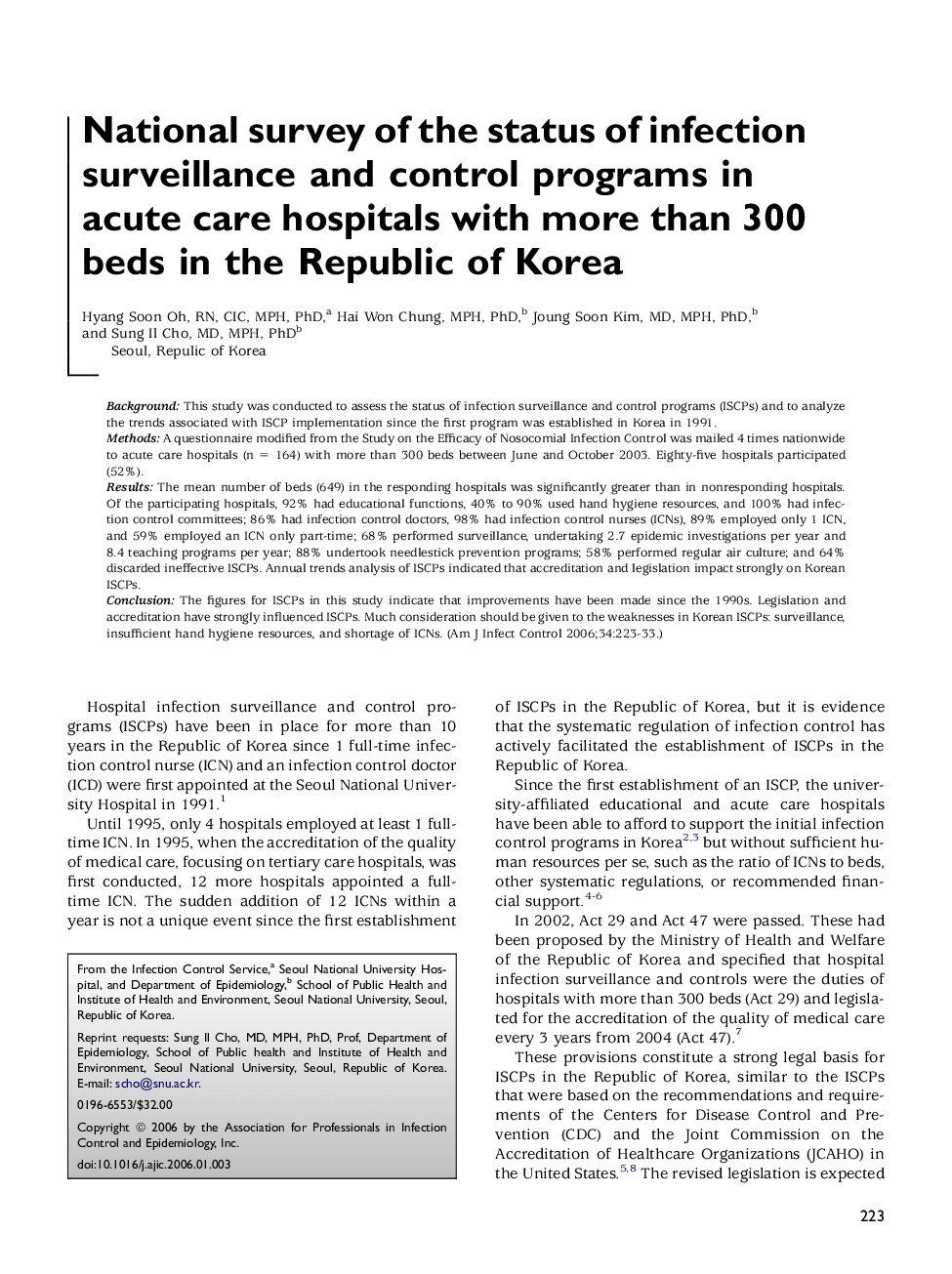| Article ID | Journal | Published Year | Pages | File Type |
|---|---|---|---|---|
| 2639394 | American Journal of Infection Control | 2006 | 11 Pages |
BackgroundThis study was conducted to assess the status of infection surveillance and control programs (ISCPs) and to analyze the trends associated with ISCP implementation since the first program was established in Korea in 1991.MethodsA questionnaire modified from the Study on the Efficacy of Nosocomial Infection Control was mailed 4 times nationwide to acute care hospitals (n = 164) with more than 300 beds between June and October 2003. Eighty-five hospitals participated (52%).ResultsThe mean number of beds (649) in the responding hospitals was significantly greater than in nonresponding hospitals. Of the participating hospitals, 92% had educational functions, 40% to 90% used hand hygiene resources, and 100% had infection control committees; 86% had infection control doctors, 98% had infection control nurses (ICNs), 89% employed only 1 ICN, and 59% employed an ICN only part-time; 68% performed surveillance, undertaking 2.7 epidemic investigations per year and 8.4 teaching programs per year; 88% undertook needlestick prevention programs; 58% performed regular air culture; and 64% discarded ineffective ISCPs. Annual trends analysis of ISCPs indicated that accreditation and legislation impact strongly on Korean ISCPs.ConclusionThe figures for ISCPs in this study indicate that improvements have been made since the 1990s. Legislation and accreditation have strongly influenced ISCPs. Much consideration should be given to the weaknesses in Korean ISCPs: surveillance, insufficient hand hygiene resources, and shortage of ICNs.
